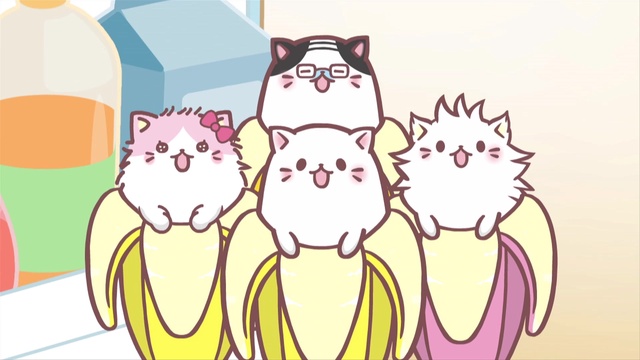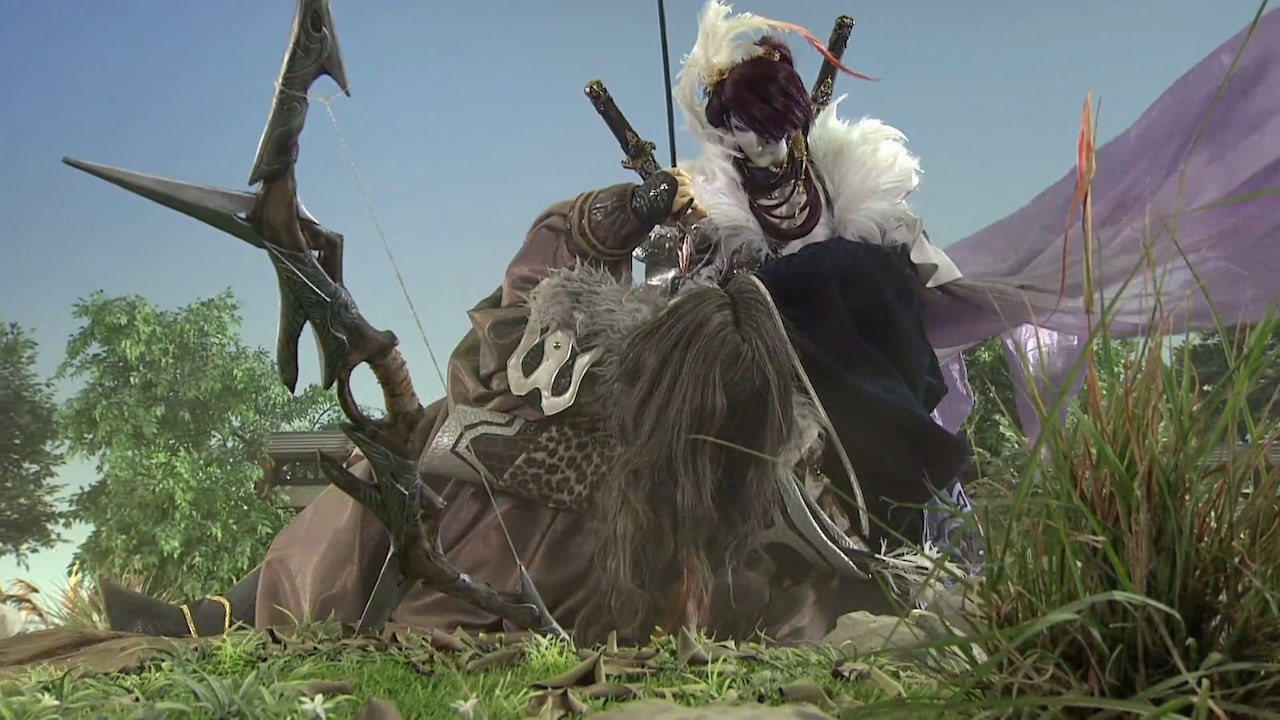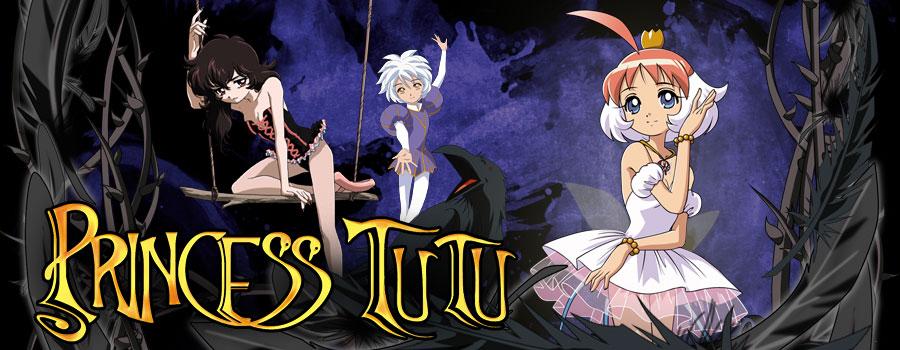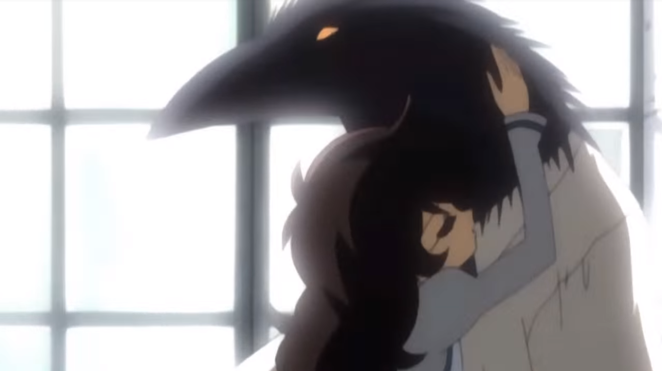 |
From https://m.media-amazon.com/images/M/MV5BM2I
0YTFjOTUtMWYzNC00ZTgyLTk2NWEtMmE3N2VlYj
EwN2JlXkEyXkFqcGdeQXVyNTAyODkwOQ@@._V1_.jpg |
Directors: Various
Screenplays: Various
Based on the comic book character created by Bob Kane and Bill Finger
Voice Cast: Various
Viewed in English Dub
Synopsis: An anthology - commissioning four acclaimed animation studios
from Japan (Studio 4°C, Madhouse, Bee
Train and Production I.G) - to
tackle the legendary comic book character Batman.
Finally seeing Gotham Knight after all these years,
even my enjoyment of it as is has to be tempered by the fact that it not only
did it not fully exceed the expectations I had back when it was first being
talked of as a project but also, to bastardise Hunter S. Thompson, this was where the wave broke for
"cool" anime being a big trend in the West in the early 2000s,
something we are waiting to come back for still slowly. This is particularly
as, after Batman: Gotham Knight,
there have been many attempts at adapting Western properties into anime, which
you'd expect to have some notice, but I seriously doubt have made an impact.
The wave rose around the early
2000s with many examples - Cowboy Bebop
(1998-9) being a hit in the West, Daft
Punk taking inspiration from Leiji
Matsumoto for Interstella 5555: The
5tory of the 5ecret 5tar 5ystem (2003), Production
I.G. being commissioned to animate a flashback sequence in Kill Bill Vo. 1 (2003) , just to name a
few. But the most pertinent in this case for a comparison was The Animatrix (2003). Say what you want for those sequels, which
killed the franchise, but just beforehand when people were first excited about
them someone had the inspired idea to get famous animation directors, not all
of them Japanese but most of them, and have them direct shorts which could be
their own ideas or even based on ideas from the Wachowskis themselves, fully involved as anime fans who were
inspired for The Matrix franchise
itself. It turned out a great idea because not only was the anthology seen as a
success, but people like myself have fond memories of it still to this day. So logically,
adapting Western material should equal success, yes?
Well, heard of the Supernatural anime, based on the famous
American show? The Dragon Age, Halo and Mass Effect adaptations? Maybe, but are they seen as actually being
good? Did you even realise Marvel had four series commissioned on Iron Man, Wolverine, the X-Men and
Blade? Are you sure you know they
exist, and why aren't they available in countries like the United Kingdom on
DVD considering Marvel Studio films
do so well here as well as in the States? I sense, with Spider senses tingling,
Batman: Gotham Knight merely being
another animated DC work, rather than an Animatrix,
was a bad omen of this...
 |
| From https://i.ytimg.com/vi/XOJS-nCkXCY/maxresdefault.jpg |
Have I Got a Story for You
Director: Shōjirō Nishimi (For
Studio 4°C)
Screenplay by Josh Olson
Voice Cast: Kevin Conroy as
Batman, Scott Menville as B-Devil, Corey Padnos as Porkchop, Crystal Scales as
Meesh, Alanna Ubach as Dander
Noticeably unlike The Animatrix, where it emphasised huge
names like Shinichiro Watanabe and Yoshiaki Kawajiri were involved,
virtually little is talked about of the creators of these segments on the final
version of Gotham Knight. The
directors are obscure and its instead the studios themselves chosen who have
recognition, based on scripts all by Western writers and meant to exist in the
same world as the Christopher Nolan Batman trilogy, set after Batman Begins (2005) and just before The Dark Knight (2008). If anything the
anthology being more studio driven is interesting, especially as Studio 4°C probably got the best out of
this project, their segments the best and starting the anthology off on a high
note here. Following four teenage skaters spinning tales of Batman, describing
him between a shape shifting shadow to a literal bat creature, it very much
follows the studio, known for being independent and unconventional, having
their distinct aesthetic, where everything is malleable and rich in colour, not
to mention off-model character animation here.
Immediately, whilst the project
altogether misses this point a little, the idea of Batman being given to
various anime studios isn't absurd. The character's lasting impact since his
creation in 1940s, for myself, has partially been, but of great importance,
because he can be adapted into any tone, be it Adam West or Christian Bale.
(This isn't the first time Batman
has been interpreted by a Japanese creator, and certainly not the last, either
as Jiro Kuwata worked on a Batman manga during a craze for the Adam West series in Japan between April
1966 to May 1967). And this is apt as Have
I Got a Story for You is entirely about various different versions of
Batman being shown, all versions which have been depicted in other stories or
the villain Manbat effectively in one case. In fact there's an added sense of metatextuality
as screenwriter Josh Olson openly admits his premise can be
traced all the way back to a 1973 Frank
Robbins penned comic called The
Batman Nobody Knows, which was adapted for the animated series The New Batman Adventures (1997-9).
This context, far from undermining the script, just adds to this nice
commentary on Batman being one of
the only American comic characters who has been able to evolve and change with
ease for any genre and style, appropriate as the character is a superhero who
yet came from a film noir and pulp era of pop culture originally and has kept,
due to his plasticity and compelling back-story, being arguably the most iconic
of all superheroes ever drawn.
 |
From http://s3-us-west-1.amazonaws.com/dcn-wp/wp-content/
uploads/2017/07/18172413/czQkRBzV.jpg |
Crossfire
Director: Futoshi Higashide (For
Production I.G)
Written by Greg Rucka
Voice Cast: Kevin Conroy as
Batman, Jim Meskimen as James Gordon, Ana Ortiz as Anna Ramirez, Corey Burton
as Yuri Dimitrov, Gary Dourdan as Crispus Allen, Rob Paulsen as Sal Maroni
In comparison, Production I.G.'s entry is more
pedestrian, following two minor characters part of the Gotham Police both
caught between warring Italian and Russian gangs. The issue with Crossfire, in terms of a plot beyond
this, is that it's a necessary chunk of the whole project but one for a studio
known for famous work like Ghost in the
Shell (1995) that is the least
dramatically invested work of all the segments. This is sad as, from this point
on, one of the best aspects of the entire anthology starts to begin, the segments
in non-chronologically order actually build a narrative with characters and
plot points spilling over to other segments in spite of being aesthetically
different from each other, but that Crossfire
is the only segment the studio gets to animated in the entire anthology. Shame
that, whilst Crossfire is an
interesting action pieces, its merely a pretty looking action piece when every
other one has a dramatic or aesthetic quirk of greater interest.
 |
| From http://www.theicecave.org/damage_control/multimedia/batmangkpic3.png |
Field Test
Director: Hiroshi Morioka (For
Bee Train)
Written by Jordan Goldberg
Voice Cast: Kevin Conroy as Bruce
Wayne / Batman, Corey Burton as Yuri Dimitrov, Ronald Marshall, Will Friedle as
Anton, George Newbern as Guido, Rob Paulsen as Sal Maroni, Kevin Michael
Richardson as Lucius Fox
Returning back to the Russian and
Italian gangs of the previous segment, Field
Test weaves multiple plot strands over the segments with Bruce Wayne and
the character of Lucius Fox, the man behind his tech in the Nolan films, field testing a method of
bullet proof armour only to emphasis Wayne's moral code. This arguably is the
most divisive looking of all the segments, which might be strange considering
the others can have very exaggerated, cartoonish styles, but in terms of how
Bruce Wayne is depiction. After Arkham
Asylum: A Serious House on Serious Earth (1989), one of the most
artistically bold and acclaimed of the franchise, nothing is strange unless you
decided, as here, to have a Bishōnen Bruce Wayne who looks nineteen. Bishōnen,
defined as a young and elegant male character, is popular in anime and fits
perfectly with the idea of Wayne as the young playboy. I think for myself why
it's the least conventional choice is because, in another inspired idea, the
production has the most famous and beloved voice actor for Batman in animated
series, Kevin Conroy, voice the character in all the segments, which is
startling as even back in the nineties when he became famous for the role, I
remember him sounding like an adult, and here as a much older man, I still
picture his Bruce Wayne as a slightly more mature figure in his thirties, not
nineteen year old looking Wayne. A minor comment, not even a criticism, just
amusing when this, not the more unconventional looking depictions of Batman,
raises the most eyebrows from fans.
Anyway, after that ridiculously
long tangent, here the segment's of interest for the story. Bee Train (aka. Bee Train Productions) are
a company known for critically divisive action anime like Noir (2001) or Madlax (2004),
so I had apprehension with little context for their work. Working with their bread
and butter here, they do well, though ultimately the tug-and-pull of Gotham Knight, a virtue as much as a
flaw, is that you can feel this work rigidly put together per segment with each
anime studio having to work with what they had already been provided with. It doesn't
allow breathing room in terms of writing the scripts so Bee Train merely had to do what was perfunctory here.
 |
| From https://i.ytimg.com/vi/tKtqdv0lTQE/maxresdefault.jpg |
In Darkness Dwells
Director: Yasuhiro Aoki (For Madhouse)
Written by David S. Goyer
Voice Cast: Kevin Conroy as
Batman, Gary Dourdan as Crispus Allen, Jim Meskimen as James Gordon, Ana Ortiz
as Anna Ramirez, Frank Welker as Killer Croc, Corey Burton as The Scarecrow
Instead wiggle room is to be
found with the better segments in terms of art style and appearance, to which
the first entry by Madhouse finds
greater breathing room by having a very exaggerated and even at times grotesque
style. What is a generic plot, following on from Batman Begins (2005) with the Scarecrow villain with Killer Croc
added on the side, gets meat to its bones with a very cartoonish atmospheric
style, all with a sense of the gothic by way of the type of art found in the
Superflat aesthetic. Madhouse are a
legendary studio behind the likes of Ninja
Scroll (1993) to Perfect Blue (1997),
and they always get the job done in terms of handsomely animated work.
And that's not to dismiss the
script either. Noticeable this is the one script by David S. Goyer, one of the collaborators on the Christopher Nolan films, and whilst this
does stretch the realism of that series with Killer Croc, even in lieu here of
being a man with a rare skin disease who was experimented on would still be an
extreme if he had made it into the actual films, it's one of the grittiest of
the segments. Certainly the darkest, The Scarecrow now targeting and murdering Christian
priests and developing his own cult of nihilistic fear in the sewers of Gotham,
compelling for a story even for a short. In fact that argubly makes this border
on horror, the kind of genre bending that anime has always been rewarding with.
If anything it actually makes, from memories of The Dark Knight, that sequel slightly disappoint in how the
character was merely a cameo. Heath
Ledger's The Joker is a part we talk of it nowadays, but imagine if Cillian Murphy was allowed to continue
on, moving the Scarecrow away from a " Worzel Gummidge" figure to
something legitimately dangerous side-by-side with Ledger? Armchair re-writing but, unfortunately, comic book films do
have a villain of the week mentality to them in many cases, making this
follow-on here actually necessary for the film's plot line too as well as
entertaining.
 |
From https://i1.wp.com/www.bateszi.me/wp-content/uploads/2008/07/
vlcsnap-1060662.jpg?resize=500%2C273 |
Working Through Pain
Director: Toshiyuki Kubooka (For Studio
4°C)
Written by Brian Azzarello
Voice Cast: Kevin Conroy as Bruce
Wayne / Batman, David McCallum as Alfred Pennyworth, Parminder Nagra as
Cassandra
If Studio 4°C were lucky enough to have the best two segments, it's
because not only do they bring their strong aesthetic game but had the most
interesting scripts to work with. Batman as a character is inherently flexible
in any genre and story. In this case, bookmarked with the character trying to
crawl out of a sewer with a gunshot wound to the stomach, this is a back-story
tale where his failed attempt to convince a Fakir in India to teach him methods
to overcome pain leads him to Cassandra, an Indian woman who posed as a boy to
learn those same techniques only to lead to her being ostracised as a witch as
a cost. Voiced by Parminder Nagra,
who some will know from the British film Bend
It Like Beckham (2002), the short's arguably the best as, even if she
exists as a character in this one short, you have a fully developed figure and
narrative, a short worthy of canon as a Batman tale even if the others weren't.
This has emotional weight to it as, in spite of Batman's belief of fighting
back, that ultimately proves an example of his flaws morally as part of his
virtues. The short, alongside looking great, also as an unexpected artistic
weight as the ending to the current day aspect has a metaphorical, even
expressionist, tone to it which has still resonatea with me. In fact because of
that ending, and Working Through Pain's
qualities in general, this could be the one short that makes revisiting Batman: Gotham Knight worthy as a
Batman work.
 |
From https://entertainmentnow.files.wordpress.com/2008/05/
batmangothamknight-s6-ds_martini-502.jpg |
Deadshot
Director: Jong-Sik Nam (and Yoshiaki
Kawajiri?) (For Madhouse)
Written by Alan Burnett
Voice Cast: Kevin Conroy as Bruce
Wayne / Batman, Gary Dourdan as Crispus Allen, Jim Meskimen as James Gordon /
Floyd Lawton / Deadshot, David McCallum as Alfred Pennyworth, Jason Marsden as
Thomas Wayne, Doctor
In contrast, the finale of Gotham Knight is an action piece
introducing the titular villain from the comics, an assassin who is so insanely
accurate he can, as seen here, hit a wasp with a cocktail stick with ease.
There's however a noticeable controversy that, for those who've watched certain
titles, there is a very idiosyncratic but realistic character design here that
bare the mark of Yoshiaki Kawajiri, a
director permanently employed at Madhouse, the studio behind this short. Kawajiri's time from this period on,
making his name as a director in the West with the likes of Ninja Scroll and Vampire Hunter D: Bloodlust (2000), is actually sad. Whilst he made
very simple plotted action tales for most of his career, he is mistakenly an
incredible character designer and animator when working with his own or other
people's work. Around this time was his last directorial feature, an adaptation
of a Western property called Highlander:
Search for Vengeance (2007) that was severely compromised and not held up
beyond being a guilty pleasure. Even a project like Ninja Scroll 2 cannot even get off the ground in the 2010s despite
that original film, back in the nineties, being such a hit in the West. I
vividly remember Kawajiri having involvement
in Deadshot, only to have his name
completely erased. The character designs are too close to his own that only a
really good mimicry could suggest otherwise, a simple action story to close that
sadly shows in the production back-story how Gotham Knight was sadly a compromise on the anime studios rather
than an exciting project that succeeded.
Even as a fun anthology, with two
great segments, that fact comes to mind in the end, as this should've been a
better production. Even if DC Comics
has numerous animated productions, crossing the character with Japanese anime
should be by all rights a splendid idea. Hell Warner Brothers even returned to the idea with Batman Ninja (2018), letting an anime studio send the character and
others to Feudal Japan. The original attempt, Gotham Knight, has moments but it's a compromised anthology whose
flaws are as visible as the good parts.
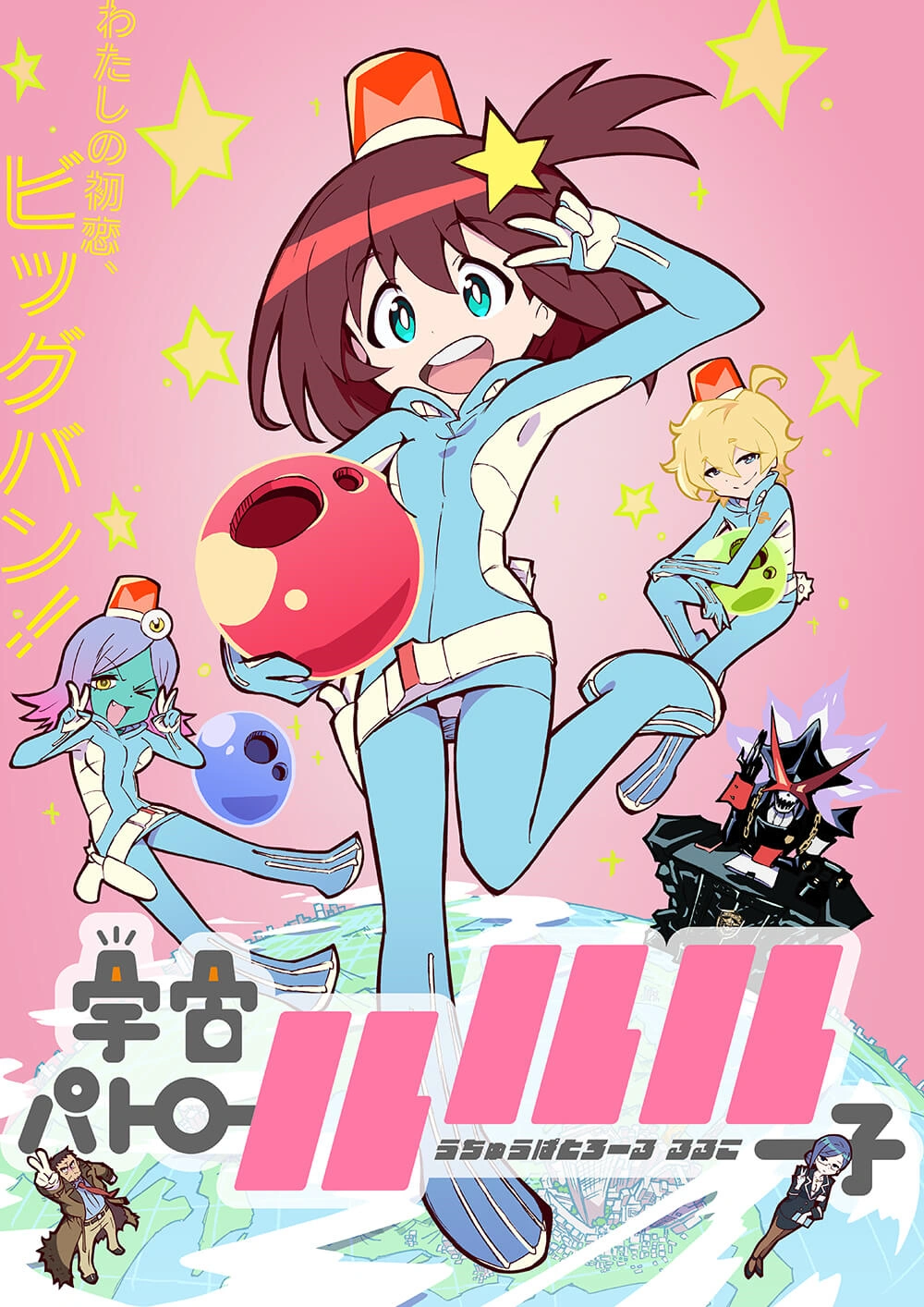

.png/revision/latest?cb=20160416013442)






